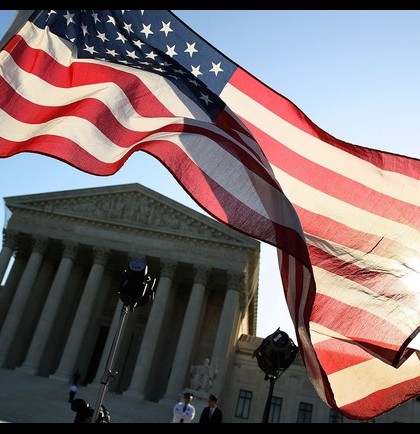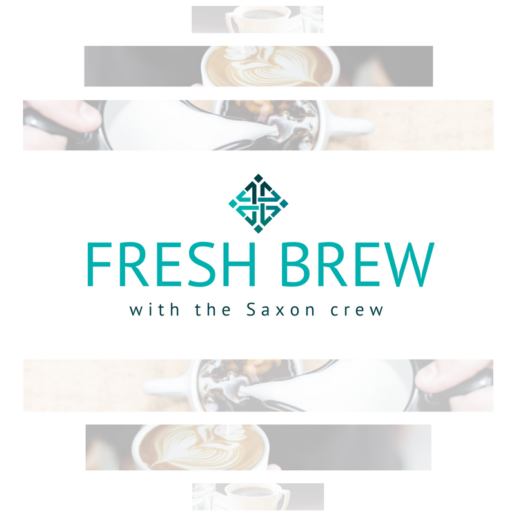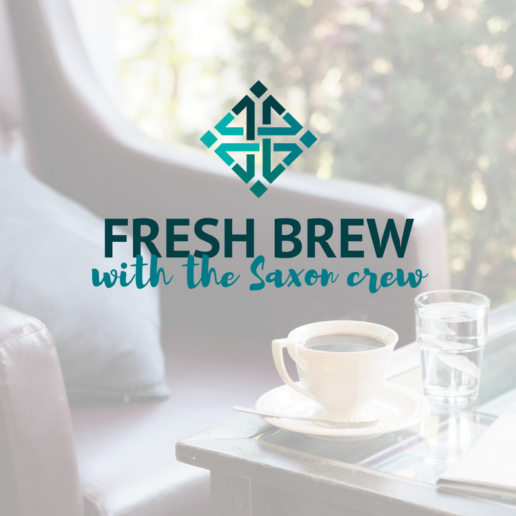Coronavirus Impacts Business Travel
With the Coronavirus being a major discussion for all travelers, many businesses are canceling meetings and events that require traveling. Continue reading this blog post to learn more about how the Coronavirus is impacting business travel.
To go or not to go: As the coronavirus spreads, more and more companies are opting to cancel long-planned conferences and tours, ditching all but the most essential business travel, and even warning employees to rethink their vacation plans or be prepared for an at-home quarantine.
Nestle made news last week when it announced plans to halt all international travel and limit domestic trips, but it was one of many companies to do so. A survey of member companies by the Global Business Travel Association, released Feb. 27, found that 65 percent of the 401 respondents had already cancelled at least a few meetings or events. More than half had nixed international travel to places beyond China, including some European countries. To keep a handle on the rapidly evolving situation, 43 percent of respondents had instituted new trip approval procedures.
"I think the major takeaway is that safety is the main concern for all travelers," said association spokesperson Meghan Henning. "Once companies feel that the virus has been contained, we are confident that travelers will be back on the road."
So far, though, the virus is not contained, and employers are scrambling to keep up. On Feb. 4, National Symphony Orchestra Executive Director Gary Ginstling announced the cancellation of performances in China for an upcoming Asia tour, but he said he was confident the Japan leg would be unaffected. "We'll be there for eight or nine days," he assured the public and NSO musicians. However, only a couple weeks later, on Feb. 28, the Japan tour was eliminated as well.
Should They Stay or Go?
The difference between a reasonable response and overreaction seems to change hourly. How can employers ensure they are making responsible decisions? Management specialists recommend the following:
- Frequently check travel advisories from the Centers for Disease Control and Prevention (CDC) and the World Health Organization (WHO).
- Update internal travel approval procedures to make sure managers know where all employees are traveling.
- Communicate clearly with employees about travel decisions and listen to any concerns they might have.
- Be prepared to be flexible.
Employers are obligated under the Occupational Safety and Health Act to provide a workplace free of known safety and health hazards, and workers have a right to refuse work that they consider to be dangerous under certain circumstances. That could include travel to destinations at risk for the coronavirus.
Beyond that, companies would do well to err on the side of caution, said David Michaels, a professor of public health at George Washington University and assistant secretary of the Occupational Safety and Health Administration (OSHA) for seven years during the Obama administration.
"Every employer has to consider whether or not the risk [of travel] is warranted—not just the destination but the plane trip itself," Michaels said. "It's a moving target right now. If you can avoid [having employees travel] as much as possible, you're going to be better off because when you minimize employee exposure, you improve your ability to function in the long run."
Courtney Harrison, chief human resources officer for San Francisco-based tech company OneLogin, said employee travel decisions are being made there individually, after consulting the CDC and WHO websites. "We are not mandating any restrictions at this point," she said. "We will work on a case-by-case basis with each employee to assess the safest path for that person."
Harrison said one challenge is ensuring the safety of colleagues and customers when an employee returns from a virus-prone area, whether for work or vacation. "[Our policy requires that], when an employee returns from an at-risk geography, they self-quarantine themselves for at least 14 days and they stay in close contact with HR," Harrison said. She noted that the company, which is in the business of providing secure login platforms, is well-positioned for remote work. "It might be the right time to reframe this challenge and use it as an opportunity to learn and practice a new way of working."
When Travel Is Part of the Job
For some, of course, travel is an integral and unavoidable part of the job. Take, for example, flight attendants, who not only travel globally but also interact with passengers along the way. The Association of Flight Attendants (AFA), the union that represents attendants at 20 airlines, has been posting the latest CDC alerts to its website and pushing airlines to provide greater protections and even curtail some flights. "AFA leaders at each airline are working directly with airline management through our contracts and other means to mitigate the impact," the union announced on its website.
The Allied Pilots Association also has been actively monitoring the coronavirus response. In late January, the union filed suit against American Airlines to stop all flights to China and encouraged pilots to refuse to fly there. The following day, American, which had already curtailed some flights to China, announced that all were canceled.
As employers scramble to get ahead of the fast-changing travel landscape, they must also consider when travel bans should end. At this point, that's one of many unanswered questions. The WHO website cautions against indefinite travel bans, saying they "may only be justified at the beginning of an outbreak, as they may allow countries to gain time, even if only a few days, to rapidly implement effective preparedness measures. Such restrictions must be based on a careful risk assessment, be proportionate to the public health risk, be short in duration, and be reconsidered regularly as the situation evolves."
Until then, monitoring public information sites and communicating with employees are key. "Our industry's first priority is the health and safety of the business traveler," said Scott Solombrino, executive director of the Global Business Travel Association, "and our members are being appropriately cautious and proactive in their approach to the situation."
SOURCE: Cleeland, N. (03 March 2020) "Coronavirus Impacts Business Travel" (Web Blog Post). Retrieved from https://www.shrm.org/ResourcesAndTools/hr-topics/employee-relations/Pages/Coronavirus-Grounds-Business-Travel.aspx
The little-discussed downsides of retirement
As the discussions of retirement are inevitable, there are questions that do not always get addressed. Continue reading this blog post to learn more about questions regarding retirement that are not always talked about.
The downsides of retirement that nobody talks about
Clients should identify the possible downsides in retirement and plan on how to avoid them, according to this article in Yahoo Finance. One of these snags is taxation on their retirement income, which can hurt their cash flow. To minimize income taxes in retirement, clients should consider creating sources of tax-free income, such as Roth 401(k), Roth IRA and permanent life insurance coverage.
Can clients have a 401(k) and an IRA?
Employees who are contributing to 401(k) plans can also save in traditional IRAs, but their IRA contributions will not be tax deductible if their income exceeds a certain threshold, according to this article in NerdWallet. Participants in 401(k)s can also contribute to Roth IRAs if they earn below the income limits set for Roth accounts. To make the most of these savings vehicles, clients should make enough 401(k) contributions to qualify for their employer's full match and save the rest of their retirement money in traditional IRAs to reduce their taxable income. Those in a lower tax bracket may opt to direct the funds to Roth IRAs to boost their after-tax income in retirement.
A big question in retirement planning: How long will I live?
Although people cannot predict their own lifespan retirement, there are online tools and services that clients can use to have a good estimate of their longevity and plan for retirement, according to this article in The Wall Street Journal. “No one can predict definitively how long someone is going to live,” says an expert. “But we can say, ‘For someone your age and gender, with your level of income and education, your body-mass index and sleep and exercise patterns, this is what science tells us you are likely to experience.’”
Retiring this year? Here's what clients need to do first
There are a few things seniors should do before they retire later this year, according to this article in Forbes. Pre-retirees should maximize their contributions to 401(k)s and other tax-favored retirement accounts, review Social Security numbers and Medicare changes and create estate plans. They should consider converting some of their traditional assets into Roths to boost their after-tax income in retirement.
SOURCE: Schiavo, A. (28 February 2020) "The little-discussed downsides of retirement" (Web Blog Post). Retrieved from https://www.employeebenefitadviser.com/news/the-little-discussed-downsides-of-retirement
Company Gifts That Workers Hate
Although giving a gift to compensate for a job well done can often lead to employees feeling unappreciated and may cause them to think the gift and feeling behind it is superficial. Read this blog post to learn more about gift-giving in the workplace.
Coffee mugs and water bottles emblazoned with the company's logo. Gift cards to stores that employees rarely visit.
These are among the gifts that managers give to workers—and that workers hate, that make them feel unappreciated, and that leave the impression that their employers are thoughtless.
So says a survey by Snappy, the New York City-based employee engagement company, which found that more than 8 in 10 U.S. employees have received a workplace gift—mostly from managers—that they didn't want.
Whether it's for an employee's birthday, for a work anniversary, or to celebrate the holidays, the survey of more than 1,000 U.S. workers demonstrates that managers may want to give more thought to workplace gift-giving.
No Logos, Please
Almost 3 in 4 workers would prefer to get a gift without their company logo on it, according to the survey, which Snappy conducted in September.
"Some employees have reported to me that they don't mind some gifts with logos, but they resent feeling like a 'walking billboard' for the company," said Paul White, who has a Ph.D. in psychology, is president of Appreciation at Work, and is co-author of The 5 Languages of Appreciation in the Workplace (Northfield Publishing, 2019). "Others state that when they are given gifts that have the company's logo, the item immediately is disqualified as a gift—because the focus of the item is the company, not the recipient."
White's research into how more than 100,000 employees feel about the workplace found that only 6 percent identified gifts as the primary way they want a company to show appreciation—far below getting words of affirmation (46 percent), quality time with a supervisor or co-workers (26 percent) and getting help from supervisors or colleagues on a project (22 percent).
"Employees are not saying they do not want tangible rewards … for doing good work," White wrote. "But what the data show is that when choosing comparatively between words of affirmation, quality time or an act of service—receiving a gift is far less meaningful than appreciation communicated through these actions. For example, employees often comment, 'If I receive some gift but I never hear any praise, no one stops to see how I'm doing, or I never get any help—the gift feels superficial.' "
Are Companies Catching On?
One would think, given research and books like White's that demonstrate how people feel about workplace gifts, that managers would adjust their gift-giving practices. Often, they don't because no one asks employees what they thought about the present. Workers are in a tight spot: If they complain or don't seem enthused, they may be seen as ungrateful or demanding, White said.
In fact, the Snappy survey found that of those workers who got a gift they didn't like, 9 in 10 pretended they liked the gift anyway.
"The leader needs to be interested in what the meaning or message of the gift is, [but] most often, it is a rather thoughtless process," White said. "In work relationships, it is the thought that counts. For employees who value gifts, either giving everyone the same item or giving them a generic gift with no thought or personal meaning is actually offensive."
Cord Himelstein is vice president of marketing and communications for HALO Recognition, an employee rewards and incentives company based in Long Island City, N.Y. He said he thinks companies are paying attention to their gift-giving practices. He noted recent data from WorldatWork showed that about 44 percent of recognition programs get updated or changed every year.
"If management isn't actively listening and applying feedback in a systematic way, then there's no point in offering gifts at all," he said. "Nailing down the right balance of rewards that employees really love takes time and effort."
Best and Worst Gifts
Respondents said that some of the "worst" gifts employers ever gave them included a pin, a plaque, and a gift card to a store they'd never visited.
In fact, more than 3 in 4 said a gift card is less meaningful than an actual gift, and almost 9 in 10 admitted that they'd lost the gift card or forgotten that it had a balance on it.
"Gift cards feel transactional and impersonal," said Hani Goldstein, co-founder and CEO of Snappy. "Employers fail to realize that gift cards put a price tag on the recipient's value and make them feel like they're worth $25. Our research points to one key insight: The most appreciated gifts aren't impactful because of their actual monetary value. What matters most is what the gifts are and how they are given."
Employers should remember that things like pins and plaques, Himelstein said, "are commemorative add-ons, not whole gifts, and should always be supplemented with more substantial and appropriate rewards."
Employees also described some of the "best" gifts employers gave them, which included an espresso machine, a trip to Paris, an iPad and a television.
White noted that such expensive gifts can be impractical for a company. They may be appropriate in rare situations, White said, such as rewarding a worker who reached an exceptional goal or recognizing someone who's served long and well.
"Generally, meaningful gifts between employees and supervisors are more impactful when they are personal and thoughtful rather than pricey," he said.
Himelstein said more expensive gifts—at least those more expensive than mugs or pins—"aren't only practical, it's a best practice."
"Nobody wants a cheap gift for their hard work, and employees can always tell when the company isn't trying," he said. "Also, don't lose sight of the fact that you don't need to constantly shower employees with expensive gifts to make them feel appreciated."
SOURCE: Wilkie, D. (03 March 2020) "Company Gifts That Workers Hate" (Web Blog Post). Retrieved from https://www.shrm.org/resourcesandtools/hr-topics/employee-relations/pages/gifts-workers-hate-.aspx
As Coronavirus Spreads, Managers Ask How to Handle Telecommuting
With the Coronavirus spreading throughout larger cities in the United States, employers are looking at various ways to keep the workplace and employees safe and healthy. Many employers are turning to remote work to support these efforts. Read this blog post from SHRM to learn more about supporting remote work.
As the coronavirus continues to spread through the U.S.—so far infecting at least 162 people and causing 11 deaths—many employers are considering telling or have already told their employees to work from home. In China, where the virus was first identified, millions of people are working remotely.
But there are technological, process, security, workers' compensation and even tax considerations employers must keep in mind to support remote work.
How to Create an Effective Teleworking Program
One of the first tasks for those who plan to manage teleworkers is deciding who on staff may be eligible for telework. Once that's decided, managers should keep in mind the following best practices.
SHRM's Remote Work Resource Center
These resources can help employers set up flexible work arrangements. They include a sample telecommuting application form and telecommuting policy and information about whether telecommuters are covered under workers' compensation.
Considering a Remote Work Policy? Consider This
Have you checked whether your workers' compensation policy covers remote employees? Do you have technology that lets you see your remote workers during meetings? Do you micromanage a remote worker more than the people who sit beside you, simply because you can't see what the remote worker is doing? Those are questions that HR departments should address to create a telecommuting program.
Technology to Support Remote Workers Evolves
In addition to videoconferencing programs, file-sharing platforms, and project management and time-tracking tools, new adaptive analytics and secure data-access technologies are helping employees who work from home or other locations outside the office.
Building and Leading High-Performing Remote Teams
Overseeing a team of remote employees doesn't come naturally to many managers. Some even question how they can know if people working away from the office are really working. But the guiding principles of leadership are the same regardless of whether the team is located under one roof or geographically dispersed.
Helping Remote Workers Avoid Loneliness and Burnout
Remote work forces structural and systemic change to accommodate different ways of working and different ways of being "available" and productive. Remote and flex work also present new challenges for managers. In particular, burnout and loneliness.
SOURCE: Wilkie, D. (06 March 2020) "As Coronavirus Spreads, Managers Ask How to Handle Telecommuting" (Web Blog Post). Retrieved from https://www.shrm.org/ResourcesAndTools/hr-topics/people-managers/Pages/coronavirus-remote-work-.aspx
Supreme Court to Rule Next Year on the ACA's Validity
With the Affordable Care Act (ACA) being questioned on whether it is in-whole or in-part constitutional, the U.S. Supreme Court has decided to rule on this matter again. The ruling regarding the validity of the ACA is expected by June of 2021. Continue reading this blog post to learn more.
The U.S. Supreme Court will again rule on whether the Affordable Care Act (ACA) is constitutional, in whole or in part, during its term beginning this October, the court announced on March 2. A ruling is expected before the term ends in June next year.
In 2019, Congress eliminated the ACA's penalty on individuals who lack health coverage—the so-called individual mandate. In the aftermath, several Republican state attorneys general filed a lawsuit claiming the ACA itself was no longer constitutional, while Democratic states and the House of Representatives, controlled by Democrats, stepped in to defend the statute.
Back in 2012, the U.S. Supreme Court upheld the constitutionality of the ACA's individual mandate as a justifiable exercise of Congress's power to tax. But without an existing tax penalty, ACA critics charge that the health care statute itself, or at least the parts of the act closely linked to the individual mandate, are no longer constitutionally valid.
In December 2018, a Texas district court struck down the ACA but stayed its ruling pending appeal, concluding that the individual mandate is so connected to the law that Congress would not have passed the ACA without it. On appeal, in Texas v. United States, a split panel of the 5th Circuit instructed the district court to rehear the matter and "to employ a finer-toothed comb on remand and conduct a more searching inquiry into which provisions of the ACA Congress intended to be inseverable from the individual mandate."
Now that the Supreme Court has agreed to hear the case, it will not go back to the district court judge for that analysis, leaving the high court free to uphold the entire ACA, uphold the statute but void provisions linked to the individual mandate, or strike down the law in full, although that draconian option is viewed as exceedingly unlikely by legal analysts. The same five justices that upheld the ACA in 2012 remain on the court.
The health law remains fully in effect during the litigation, including all employer coverage obligations and reporting requirements.
The Supreme Court's Packed Schedule
The Supreme Court has placed five cases—including Texas v. United States—on the 2020 docket. This suggests that the hearing could be held in early or mid-October 2020, right before the 2020 election, although we may not know the oral argument schedule until later this spring or summer. In any event, a decision in Texas v. United States would not be expected until 2021 (and presumably not until June 2021).
It is worth noting that the Court will hear a separate ACA-related challenge on the final day of oral argument during its current term. On April 29, 2020, the Court will hear one hour of oral argument in the consolidated cases of Little Sisters of the Poor v. Pennsylvania and Trump v. Pennsylvania. These cases focus on the validity of two Trump-era rules that created broad exemptions to the ACA's contraceptive mandate for religious or moral reasons. And we are still waiting on a decision from the Court over whether insurers are owed more than $12 billion in unpaid risk corridor payments; oral argument was held in that challenge in December 2019 and a decision could be issued at any time.
(Health Affairs)
Lawsuit Stoked Confusion
America's Health Insurance Plans (AHIP), the insurance industry's leading lobbying group, applauded the justices' decision to hear the lawsuit. "We are confident that the Supreme Court will agree that the district court's original decision to invalidate the entire ACA was misguided and wrong," said AHIP President Matt Eyles in a statement.
Association for Community Affiliated Plans (ACAP), a group that represents more than 70 safety-net plans, noted that the lawsuit "has cast a pall of uncertainty over the future of the individual insurance market," according to ACAP CEO Margaret A. Murray.
(Fierce Healthcare)
5th Circuit Highlighted Suspect ACA Provisions
When the 5th Circuit instructed the district court to rehear the matter and to focus on those ACA provisions that Congress intended to be "inseverable from the individual mandate," this suggested, legal analysts said, that the appellate court was unlikely to overturn the ACA in full. However, the appellate court might have struck down those parts of the law directly related to the individual mandate, such as the 5:1 ratio age band, under which insurers can't charge seniors premiums more than five times what younger patients pay, and community rating, which prevents insurers from varying premiums within a geographic area based on age, gender, health status or other factors.
The increase in revenue to insurers from the individual mandate was meant to offset the decrease from these restrictions. It's unclear whether the U.S. Supreme Court will take a similar approach when it hears the case.
(SHRM Online)
SOURCE: Miller, S. (03 March 2020) "Supreme Court to Rule Next Year on the ACA's Validity" (Web Blog Post). Retrieved from https://www.shrm.org/ResourcesAndTools/hr-topics/benefits/Pages/supreme-court-to-rule-next-year-on-CAs-validity.aspx
Tips for Making Your Workplace More Sustainable
Companies are continuously looking into ways to become a more sustainable workplace, which includes buying in bulk, reducing paper, and recycling. Read this blog post to learn helpful tips for becoming more eco-friendly in the workplace.
Employees at CareerPlug, a software company in Austin, Texas, loved their Keurig coffee. In fact, the 60 employees used around 300 of the brand's disposable K-Cups each month.
However, one employee on the company's sustainability committee was bothered by the amount of waste this practice was generating. Instead of trying to eliminate the coffee system, however, she proposed a solution: The company could save money and help the environment by investing in reusable K-Cups.
CareerPlug implemented her idea and, according to Natalie Morgan, director of HR, the company has reduced its monthly coffee budget from $126 to $42.
"Not only did we eliminate 300 K-Cups per month," she said, "we reduced costs by 67 percent."
At a time when climate change is dominating headlines, companies around the world are evaluating how they can put more sustainable practices into place.
"As hubs in our communities, workplaces represent a large footprint to create an impact within our broader society," said Anne Robinson, chief talent officer at VillageMD, a professional medical practice in Chicago. "Driving action against eliminating waste and reducing our carbon footprint are such critical elements to ensuring generations to come are able to enjoy and benefit from the environment that we know today."
To help make your office more environmentally friendly and do your part to protect the planet, here are some easy habits to put into practice.
Recycle, Reuse Paper or Go Paperless
Think about all the times you use paper in the office. You likely print out employee onboarding and performance review forms, the employee handbook, notes for distribution at meetings and notices to hang around the office. Recycle or try reusing paper, suggests Angelique J. Hamilton, founder of the HR Chique Group consulting firm in Jacksonville, Fla.
Also have employees view documents with their teams on shared drives instead of distributing paper copies. "Not everything needs printing out, especially not the documents handed out during meetings, which are glanced at for five minutes," said Nate Masterson, HR manager for Maple Holistics in Farmingdale, N.J. "Use online document-sharing platforms to collaborate and share work in the office."
Digital tools such as Google Drive, Slack, Dropbox, Basecamp and Asana can help employees make the leap from paper-based to digital communication.
Develop a Remote-Work Program
Most Americans—76.5 percent, to be precise—take a car to work every day, according to research by the World Wildlife Fund. Transportation is the second largest contributor to carbon emissions, behind the electricity sector.
One way to cut back on those commuting emissions is to allow employees to work from home at least some of the time, said Tony Bergida, HR director at Frosty Tech, an engineering firm in Overland Park, Kan. "Allow employees to work from home a couple of days a week, which, in addition to reducing the impact of commuting, [also] cuts down on in-office snack packaging, electricity use, trash creation and more."
Consider the Landscaping
When thinking about workplace sustainability, don't forget about your outdoor areas. Hamilton recommends xeriscaping—the practice of using plants that require less water and arranging them in ways that they need less water to thrive.
Many communities, especially those in areas plagued with water shortages, are rewarding companies that decrease water usage in this way through rebate and tax relief programs, such as those offered by the Los Angeles County Waterworks Districts.
Cut Back on Water Bottles
Many cities are now charging retailers that give customers plastic bags, and restaurants are being encouraged to seek alternatives to plastic straws and utensils. But many companies are still providing single-use plastic water bottles to employees.
A more environmentally friendly approach is to buy or rent a water dispenser for the office.
Buy Snacks in Bulk
Providing snacks to employees is a great perk. However, if you want to reduce plastic use and waste, buy in bulk instead.
Morgan said the CareerPlug team "evaluated how we were ordering breakroom snacks and realized we were buying a lot of individually packaged items. We purchased some reusable containers instead and now buy most of our snack items in bulk."
Seek Buy-in
When implementing waste-reduction initiatives, said Robinson at VillageMD, organizational leaders should model the change they want to see. They should publicly invest in and support programs that make a difference, which demonstrates to employees the behaviors they should emulate.
Robinson said her company involved employees from the beginning by creating a task force to plan and implement sustainability goals. "Employees are passionate about this, and they're wanting to do this."
You'll also need to educate employees on waste reduction to ensure they know why changes are taking place. Robinson is creating communication that explains the company's plan for putting different types of trash and recycling bins around the office, what employees can dispose of in each, and how to properly operate new composting equipment.
Becoming a more eco-friendly workplace will not only show employees and job candidates that the company is Earth-friendly but also that it cares about offering a healthy work environment.
"Workplaces are ultimately part of a larger community, and caring about your environmental impact is both healthy for your external reputation and your corporate connection to the individuals in your workplace," Morgan said. "It's also, plainly, the right thing to do to be engaged in this global conversation and take a stance for positive impact."
SOURCE: Lobell, K Ora. (26 February 2020) "Tips for Making Your Workplace More Sustainable" (Web Blog Post). Retrieved from https://www.shrm.org/ResourcesAndTools/hr-topics/employee-relations/Pages/Tips-for-Making-Your-Workplace-More-Sustainable.aspx
Fresh Brew With Jake Meyer
Welcome to our monthly segment, Fresh Brew, where we will be exploring the delicious coffees, teas, and snacks of some of our employees! You can look forward to our Fresh Brew blog post on the first Friday of every month.
“Educate your employees about their benefits. The more they understand them, the more they will realize how big of a benefit they are.”
Jake Meyer is an Account Executive at Saxon Financial Services
Jake Meyer joined the Account Management team in December 2015 after previously working in operations for the Cincinnati Reds. He holds a B.A. Cum Laude in English Writing and Political Science, from the University of Pittsburgh.
Outside of the office, Jake enjoys spending time with his family and friends. He is an avid sports fan, and likes to attend sporting events as often as possible.


Rhinegeist Truth
Jake enjoys drinking Rhinegeist Truth which is a local Indian Pale Ale from the Rhinegeist Brewery in Cincinnati, Ohio.

Jake doesn’t have a particular favorite snack that he eats when sipping on his favorite brew. He instead likes to enjoy the hops in his favorite IPA.
Industrywide Initiative Brings Blockchain to HR
Although many HR professionals would think of a blockchain as an obscure element of technology with very little practical application in their jobs, it can protect those who are involved in exchanging data in digital environments. Read this blog post to learn more.
To many human resource professionals, blockchain may sound like an esoteric technology with little practical application in their jobs. But an ambitious initiative called the Velocity Network Foundation (VNF) shows how blockchain has near-term benefits for both recruiters and job seekers. Experts say the project is one of a growing number of uses for blockchain—in talent acquisition, payroll and data security.
Blockchain technology allows two or more people, businesses or computers that may or may not know each other to safely exchange data in digital environments without having an intermediary validate the transaction.
The VNF is a nonprofit consortium of 15 companies in HR technology and education industries. It was formed to reinvent how the career records of job seekers and students are shared in the global labor market. A blockchain-powered platform streamlines the way work history, professional achievements, skills, talent assessments and educational certifications are verified, stored and shared.
Founding members of the VNF are Aon's Assessment Solutions, Cisive, Cornerstone OnDemand, HireRight, Korn Ferry, National Student Clearinghouse, Randstad, SAP, SumTotal Systems, SHL, Ultimate Software, Unit4, Upwork, Velocity Career Labs and ZipRecruiter.
Benefits for Job Seekers, Recruiters
On the VNF platform, job seekers create and own a verifiable digital record of their career credentials and can share it with others. According to a 2019 global study from Accenture, more than 70 percent of 10,000 surveyed employees said they want to own their work-related data and take it with them when they leave their jobs—and nearly half (48 percent) of C-level executives were open to allowing them to do so.
Experts say portable work records help recruiting teams. Recruiters get easier access to an all-in-one digital collection of employment history and can evaluate candidates more quickly.
Yvette Cameron is co-founder and executive vice president of Velocity Career Labs, a developer of blockchain technology that helped establish the VNF. Cameron said the foundation is initially focused on building a platform that serves as a "public utility layer." The project's second phase will enable network members to build and integrate applications that facilitate the exchange of credentials between job seekers or students and employers and educational institutions. Being open and transparent about the process is key to the foundation's success, she said.
"We wanted to include members from across the industry to solve the challenge of how career records are shared in the labor market because we believed no single vendor or organization could address it," Cameron said. "Taking an industrywide approach means the VNF will be owned by nobody and governed by everybody."
Debasis Dutta, vice president and general manager of product management for vendor SumTotal Systems in Gainesville, Fla., said the network will benefit job seekers and recruiters alike. In a labor market where verifiable skills are increasingly in demand and the relevance of college degrees is shrinking, Dutta said employers need quick, secure access to a job-seeker's skills.
"We're leveraging blockchain to address the problem of job candidates or employees owning their own verifiable career credentials and making the process of checking employment history and skills more efficient for recruiters," Dutta said.
Cameron said blockchain means job candidates no longer have to be at the mercy of their employers' systems to get quick access to information about their work histories. "The goal is to put people back in control of their digital professional credentials in a trusted and verifiable way and fix the underlying data exchange problem we have in the labor market," she said.
Apratim Purakayastha, chief technology officer with the Skillsoft group (which owns SumTotal Systems), said blockchain-inspired approaches like the VNF also can help when creating internal project teams. "Organizations that are constantly bidding for projects often have to assemble project teams with the right skills, and prospective clients want to see proof of those skills," he said. "If verified career credentials can be quickly shared with clients through blockchain, it improves the chance of success in those projects."
Blockchain Gains Traction in HR
HR's use of blockchain is growing incrementally. Research and advisory firm Gartner found that 12 percent of 500 surveyed HR and technology leaders are using blockchain-based solutions in their HR function today and another 23 percent are experimenting with the technology in their area of responsibility. Of the latter group, half are running blockchain-inspired pilot projects in their HR function, the study found.
Matthias Graf, a senior director analyst in Gartner's HR practice, said the top three HR process areas where study respondents reported using or piloting blockchain are in HR analytics and reporting, policies and governance, and workforce planning. But Graf also noted an important distinction between "adoption" and "maturity levels" of the technology within human resources.
"If you take a closer look at where blockchain solutions are most advanced in HR, the picture differs," he said. "The most mature applications can be found in the areas of compensation and benefits, recruiting and employee relations, and labor law."
An example is paying gig workers. Blockchain solutions can facilitate real-time payments, the Gartner study found, bypassing intermediaries like payroll aggregators or banks. Blockchain can make it easier to employ and pay workers in far-flung locations around the globe where the payment infrastructure may be limited, as well as make it more efficient to verify the identity and experience of such workers.
Chris Havrilla, vice president of HR technology and solution provider research for Bersin, Deloitte Consulting in Atlanta, said using blockchain for instant pay can expand access to gig talent and make contract jobs more attractive to top candidates.
Blockchain and Data Privacy Regulations
Companies considering using blockchain often wonder how it aligns with data privacy regulations like the European Union's General Data Protection Regulation (GDPR). Gartner's study found 40 percent of respondents cited "data security and privacy concerns" as their top worry about using blockchain, followed by 31 percent who cited "integrating blockchain technology with existing technology architectures."
Cameron said no proprietary data or personally identifiable information from users will be stored on the VNF blockchain platform. "Depending on the approach that's taken with blockchain, you can be 100 percent compliant with GDPR," she said. "In our approach, career credentials are owned by the individual and stored privately in a trusted way on their own devices. You decide as a job candidate or student who gets access to those credentials, when and for how long."
SOURCE: Zielinski, D. (27 February 2020) "Industrywide Initiative Brings Blockchain to HR" (Web Blog Post). Retrieved from https://www.shrm.org/ResourcesAndTools/hr-topics/technology/Pages/Industrywide-Initiative-Brings-Blockchain-HR.aspx
Common interview answers can say a lot about potential employees
Interviews can be stressful, long and overwhelming but the process can represent the first impression of a potential employee and can illustrate how they might communicate with colleagues and clients. The interview process can allow recruiters to get an understanding of who the candidate is. Continue reading this blog post to learn more about how common interview questions can show a lot about potential candidates.
The interview process is stressful for everyone involved. Employers are eager to get candidates through the door and candidates are overwhelmed about giving the perfect interview. Hiring managers should always consider a candidate’s past experience and expertise when looking to fill a position. However, looking closer at the way candidates approach basic interview questions can also provide valuable insight.
Sometimes, answers to the most common interview questions provide recruiters with the knowledge needed to get a clear understanding of who a candidate is. Although simple on the surface, when asking questions like, “tell me about yourself” and “why do you want to work here,” you are gaining important knowledge on how well a candidate will communicate with other employees and clients. It can also reveal their ability to take feedback and apply it, and how prepared they are for the interview.
“Tell me about yourself.”
Although this request is commonly used as an icebreaker, it is crucial to the interview and screening process. This is the candidate’s chance to give you a quick, comprehensive look into who they are as a person and a professional. Since this is such a popular, and expected, question in interviews, candidates should be prepared to provide a memorable, concise answer without feeling the need to ramble.
Look for a healthy blend of information on a candidate’s personal life, professional journey and some background information. Depending on the position and person, a good answer can include whether or not a candidate moved a lot growing up, classes they took in college that are relevant to the job they are applying for, or a little about their work history and personal life. When done correctly, a candidate will leave you with something to remember them by. At the same time, an effective answer also includes a candidate’s motivations and where they see their career long term.
“What is your biggest weakness?”
This question is notorious for prompting insincere and generic responses such as, “I’m always working late,” instead of giving an actual answer. Rather than accepting watered-down responses like these, challenge candidates to elaborate by pushing them out of their comfort zone.
Take the “working late” example – this response could indicate a time management issue, and it gives you an opportunity to question why they were unable to complete tasks during their allotted time. Use this to gauge whether or not the candidate is qualified for a particular position, and allow them to expand on how they plan to keep improving.
When discussing the biggest weakness, look for answers that reveal if they recognize their professional flaws, if they are working to improve and if they can take feedback from managers. It is key to seek out candidates who are willing to improve and achieve continuous growth.
“What would your previous manager say about you?”
An effective answer to this question should always go beyond “they loved me” – it should include a combination of honesty, vulnerability and directness.
If a candidate is having a hard time answering this question, ask them to simply summarize the feedback of their previous manager, which should include both positive and realistic points. For instance, an ideal response explores the areas where the candidate needed additional coaching, where they had the biggest opportunity to learn and what would have made their manager most proud.
“Do you have any questions for me?”
This is a classic interview-closer, but it is also yet another opportunity to see how prepared the candidate is for the interview and how interested they are in the job. Candidates who come prepared with a list of questions show that they have done their homework and have a genuine interest in learning more.
At the same time, you also want someone who has been engaged during the interview and is able to adapt. If they have questions on their list that have been answered during the interview, they should still go through them and refer to the previously discussed answer. Questions referencing specific aspects of the company, such as something they found in their research, also show that a candidate isn’t taking the same questions to every interview.
Although a normal process for most interviews, simple and common questions can tell a lot about a person and how they carry themselves in unique situations. In addition to other attributes (experience, professionalism, etc.), looking at how candidates respond to these go-to questions can give hiring managers great insight into what they can offer to the company.
SOURCE: Blanco, M. (25 February 2020) "Common interview answers can say a lot about potential employees" (Web Blog Post). Retrieved from https://www.employeebenefitadviser.com/opinion/common-interview-answers-can-say-a-lot-about-potential-employees
How to Build Your Youngest Employees' Skills
Work environments and employers are being introduced to the younger generation, Generation Z. In order to set this generation up for success, training and developing the expectations should be done with Generation Z in mind. Read this blog post to learn more.
Organizations committing to preparing their workforce with the skills they'll need for the future will want to keep the training and development expectations of Generation Z in mind.
Customized learning is something members of Generation Z expect from their employers, according to Jennifer Sanders, head of marketing, operations and administration for Barnes & Noble Education (BNED) Inc.'s digital student solutions segment. BNED is the parent company of Barnes & Noble College, a retail and learning company in Basking Ridge, N.J., that operates 769 campus bookstores and school-branded e-commerce sites.
A 2019 LinkedIn survey of more than 2,000 members of the generation born between 1995 and 2010 found that 43 percent want a "fully self-directed and independent approach to learning," while only 20 percent of 400 learning and development professionals surveyed said they plan to offer this level of personalized learning.
Sanders, who works with interns from Generation Z, spoke with SHRM Online about the kind of training and development this generation—whose oldest members are 24 years old—want from employers.
SHRM Online: Members of Generation Z are accustomed to having everything personalized. How can an employer adapt its training accordingly? Are we talking an emphasis on mentoring, for example?
Jennifer Sanders: Gen Z is a practical and entrepreneurial generation, and this means that members of this generation are generally independent self-starters. While these are great attributes, there are some workplace skills that are difficult to learn on your own, which is why I strongly believe in mentoring and one-on-one training when it comes to Gen Z employees.
Taking the time to sit with Gen Z employees to teach them about workplace nuances can benefit both employee and employer. For example, when onboarding our social media interns, I invest the time to talk about the voice of our brand, our social media channels, and actively solicit their ideas and feedback on how to better capture the interest of Gen Z audiences. Personalized training takes time and patience, but I have found this investment yields great returns with the employees and how they can really make a difference in the work they contribute.
SHRM Online: A recent Barnes & Noble report on Gen Z found that 51 percent of survey respondents said they learn best by being hands-on. Does this mean employers should place more of an emphasis on apprenticeships and team projects?
Sanders: From our research, we know that hands-on experience and using interactive devices is how Gen Z learns best. Based on this, I'd encourage employers to place an increased emphasis on learning and development programs that allow Gen Z employees to work together as they learn new skills or tasks. Because they learn best by doing, employers should consider live training courses led by managers or peers that incorporate small group activities throughout—a move that allows employees to get more direct, hands-on experience with new tasks than traditional classroom or online instruction allows for.
SHRM Online: That same report noted the importance of tools such as podcasts, gamification, online videos, for high school and college students. Looking to the workplace, what types of tools are likely to resonate for members of this generation?
Sanders: Gen Z employees are already engaging with interactive tools prior to entering the workplace so we have an obligation to adapt as we onboard these types of employees. We expect on-demand learning platforms to be a core way to engage Gen Z employees in the workplace. Specifically, platforms like LinkedIn Learning, Slack, GroupMe and pre-recorded videos produced by colleagues and managers are tactics organizations might consider integrating into their training and L&D programs.
SHRM Online: How can employers help employees of this generation develop soft skills, such as answering a phone and dealing with clients and customers?
Sanders: Organizations can help this generation develop soft skills by offering opportunities for job shadowing. Upon entering the workforce, young employees can observe their colleagues interacting with customers or even in internal meetings as part of the onboarding process.
Mentoring and personalized training take time, but the benefits are worth it. We've seen this with our interns time and time again. If you give them the opportunity to hear you on a call with a client or sit with them to explain what makes an effective e-mail, they will pay attention. You'll see them pick up on these soft skills fairly quickly and before long, these skill sets become second nature.
SOURCE: Gurchiek, K. (24 February 2020) "How to Build Your Youngest Employees' Skills" (Web Blog Post). Retrieved from https://www.shrm.org/resourcesandtools/hr-topics/organizational-and-employee-development/pages/how-to-build-your-youngest-employees-skills.aspx













